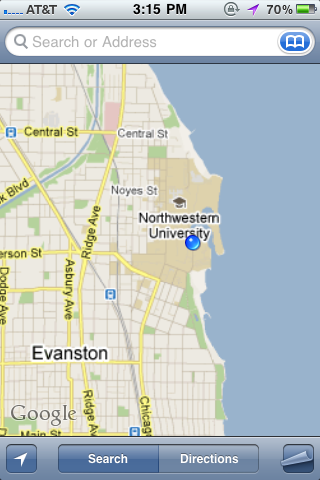One of the great joys and great challenges of our work environment is interacting with a variety of scholars and researchers who each bring a different set of knowledge and new vocabulary to the table. With each new project, the initial task is to come to some basic understanding of the particular vocabulary and specifically to come to terms with that vocabulary’s relationship to our own technology-driven vocabulary. As Harlan mentioned, we have recently begun the process of defining and kicking off a new project with Jim Akerman and the Newberry Library which will showcase the Newberry’s collection of historical (and contemporary) maps.
At NUAMPS we think about mapping all the time. Now that we are almost all equipped with GPS-enabled phones, we interact daily with location services and thus maps. The question ‘where am I?’ is almost never heard in our office – not by our staff anyway, visitors always. But entering the Mapping Movement kick off meeting, I realized how limited my definition of ‘map’ has become since the location-aware device currently in my pocket entered my life. My idea of maps has become more and more about me and what is near me.
Maps and location are very different things, though, and I had forgotten this. Most maps incorporate space and location as one aspect of their purpose, typically the foundation, but maps are not always about ‘here’. In fact historically, mapping was often for the purpose of communicating findings and experiences to those who could not be ‘there’. So they are often about ‘over there’ or even ‘back then’. There is always of course a relationship to the ‘me’, but we have to think more broadly about that relationship.

